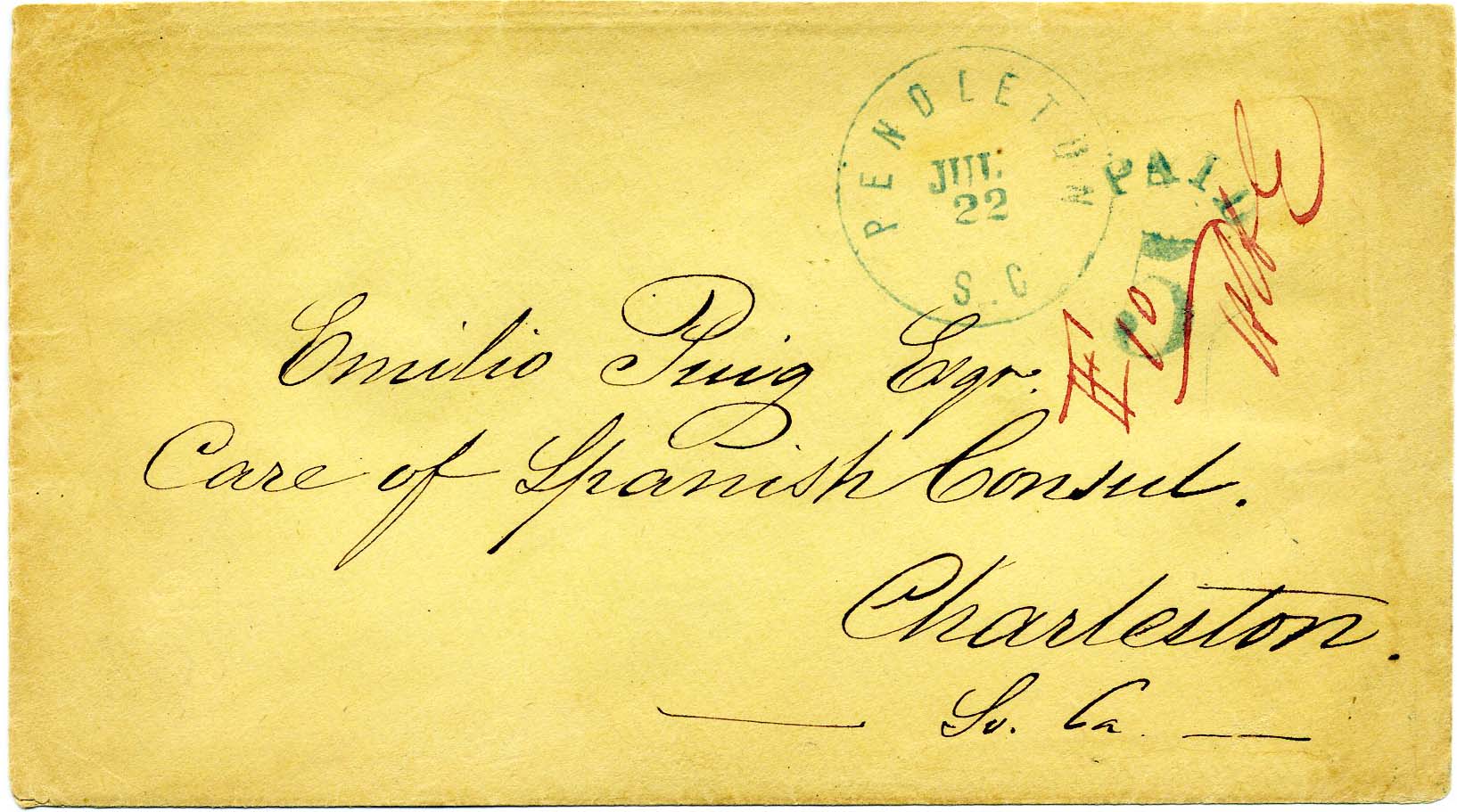-
Confederate Postal History
- CSA 1 on Cover, Section 1
- CSA 1 on Cover, Section 2
- CSA 2 on Cover
- CSA 3 on Cover
- CSA 4 on Cover
- CSA 5 on Cover
- CSA 6 on Cover
- CSA 7 on Cover Section 1
- CSA 7 on Cover Section 2
- CSA 8 on Cover
- CSA 9 on Cover
- CSA 10 on Cover
- CSA 11 on Cover Section 1
- CSA 11 on Cover Section 2
- CSA 11 on Cover Section 3
- CSA 12 on Cover Section 1
- CSA 12 on Cover Section 2
- CSA 12 on Cover Section 3
- CSA 13 on Cover
- Advertising and College Covers
- Blockade-Run Mail
- Confederate Patriotic Covers Section 1
- Confederate Patriotic Covers Section 2
- Independent State & US Used in Confederacy Section 1
- Independent State & US Used in Confederacy Section 2
- Miscellaneous Section 1
- Miscellaneous Section 2
- Mourning Covers
- Official Semi-Official and State Imprints Section 1
- Official Semi-Official and State Imprints Section 2
- Postmasters' Provisionals on Cover Section 1
- Postmasters' Provisionals on Cover Section 2
- Postmasters' Provisionals on Cover Section 3
- Prisoner of War & Cilvilian Flag of Truce Section 1
- Prisoner of War & Cilvilian Flag of Truce Section 2
- Prisoner of War & Cilvilian Flag of Truce Section 3
- Railroad Covers
- Sternes Correspondence
- Wallpaper Covers
- Confederate Stampless
-
Confederate Stamps
- Essays, Proofs, Private Printings
- Postmasters' Provisionals Section 1
- Postmasters' Provisionals Section 2
- Confederate Use of US Postage
- CSA 1 5 Cents Lithograph
- CSA 2 10 Cents Lithograph
- CSA 3 2 cents Lithograph
- CSA 4 5 cents Lithograph
- CSA 5 10 Cents Lithograph
- CSA 6 5 Cents Typograph
- CSA 7 5 Cents Typograph
- CSA 8 2 Cents Engraved
- CSA 9 10 Cents Engraved
- CSA 10 10 Cents Engraved
- CSA 11 10 Cents Engraved, Section 1
- CSA 11 10 Cents Engraved, Section 2
- CSA 12 10 Cents Engraved, Section 1
- CSA 12 10 Cents Engraved, Section 2
- CSA 13 20 Cents Engraved
- CSA 14 1 Cent Typograph
- Philatelic Literature
Navigate from drop-down boxes above or TABLE OF CONTENTS
In lot descriptions:
SCV = Scott Catalogue Value
CCV = 2012 CSA Catalog Value
Unused = no gum unless noted
Content anywhere underlined in blue is a clickable link - follow it
CSA Catalog vs. Scott Color Designation Chart
Click on thumbnails to enlarge
and see full item information
Please use Secure Interactive Order Form and carefully read the
Ordering and Sales Policies page before ordering.

Item# 18354
Price: $3,750
PRIZE COURT COVER presented as EVIDENCE OF A LEGAL SEIZURE OF A BLOCKADE-RUNNER. PENDLETON / S.C. // JUL / 22 [1861] with matching handstamped PAID 5, red manuscript court docket of “HHE” (Henry H. Elliot, the commissioner who initialed it as evidence in the case - CSA catalog PC-01, CCV $3,500). This was one of the early prize court cases of the Civil War. Addressed to the “Emilio Puig, Esq., Care of Spanish Consul, Charleston S.C.” It is one of the covers discovered in a false-bottom trunk. On 20 June 1863, a decree of restitution was ordered as the court ruled that the seizure had been without cause, Ex Birkinbine and Walske with his penciled notes on verso, Extremely Fine, 2012 PF certificate. $3,750.
Emilio Puig was a resident of Charleston who is believed to have been engaged in running Cuban commodities into the South through the Union blockade. Puig attempted to leave South Carolina on the Spanish ferryboat Nuestra Senora de Regla out of New York en route to Cuba but forced to put into Georgetown S.C. for repairs due to storm damage. It was there that Puig boarded the ship. When it continued its voyage to Cuba, it was captured at Port Royal on December 1, 1861, by the USS Aries. The ship and cargo were taken to New York and Puig, a Spanish citizen, was held prisoner for violating neutrality laws. Puig's letters were among the contraband seized (found in a false-bottom trunk) and used as evidence in the New York prize court. Eventually, the US Government lost its case in Supreme Court, and the ferry was declared neutral. Even then, Puig's letters were not returned to him. Blockade-run mail often involved complex handling systems that took advantage of all available connections between CSA ports and the neutral ports thereby providing access to the US and Europe.
Listed in both Miscellaneous-2 and Blockade sections
